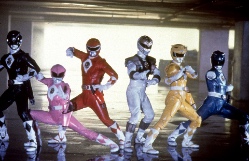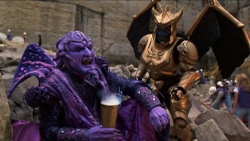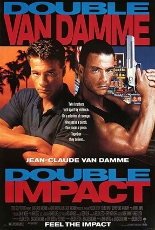
 If you’re anything like me — and I’m guessing you probably aren’t — you probably thought that The Parent Trap would have been a might better with Bolo Yeung as a Triad hitman who mercilessly shotgunned Hayley Mills’ parents to death in the film’s opening.
If you’re anything like me — and I’m guessing you probably aren’t — you probably thought that The Parent Trap would have been a might better with Bolo Yeung as a Triad hitman who mercilessly shotgunned Hayley Mills’ parents to death in the film’s opening.
Double Impact gets you halfway there, albeit with double the Jean-Claude Van Dammes. Let’s get together, yeah yeah yeah!
Here, JCVD takes on the dual roles of Chad and Alex, somewhat different twins separated at birth and driven together by their love of smoking-hot blondes and, I guess, solving the murder of their parents while collecting the apparent royalties from the Hong Kong-mainland tunnel their dad completed before his death. But mostly smoking-hot blondes.
Between selling smuggled Mercedes on the high seas to busting up a clandestine Hong Kong drug operation, the brothers seem to be getting along until one of them gets way too drunk and imagines in his mind — and dramatized onscreen, thankfully — the other brother sexually satisfying a smoking-hot blonde, leading to some classic Van Damme-on-Van Damme action.
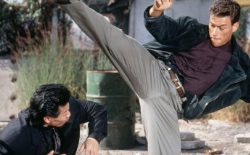 Still, after seeing a few Triads storm the beach the next morning, they decide to put their mutual dislike of each other aside and take on the nameless Chinese sentries, all to get to the snooty British businessman that, as snooty British businessmen are wont to do, put the hit on his parents for reason I still haven’t grasped.
Still, after seeing a few Triads storm the beach the next morning, they decide to put their mutual dislike of each other aside and take on the nameless Chinese sentries, all to get to the snooty British businessman that, as snooty British businessmen are wont to do, put the hit on his parents for reason I still haven’t grasped.
With many instances of Bolo Yeung’s burly stockiness lurking about — and even a little bit of Cory Everson’s muscular thigh-crunching for equal opportunity — the screenplay, written by Van Damme and director Sheldon Lettich (Lionheart), is a highly nonsensical but ultimately fun kick to both of the gonads, preferably while in the patented Van Damme splits position.
For years, Van Damme has teased a sequel pitting Chad and Alex against the “South Central mob,” if such a thing exists, but those plans have yet to see the light of day. I guess those Tostitos commercials are the closest we’re ever going to come, which I’m okay with. —Louis Fowler


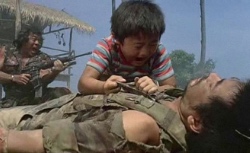


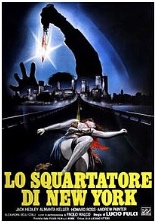
 I’ve seen
I’ve seen 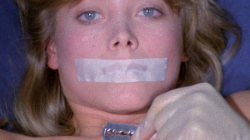
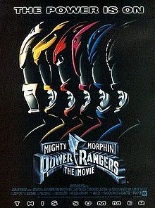
 While I have never been a fan of the Power Rangers — I was in high school during its original release and knew better — I went to a screening of the gritty remake a year or so ago, mostly disappointed and dismayed how they got rid of everything that made the original even remotely watchable: the bright colors, the cheap monsters and the generally jovial atmosphere.
While I have never been a fan of the Power Rangers — I was in high school during its original release and knew better — I went to a screening of the gritty remake a year or so ago, mostly disappointed and dismayed how they got rid of everything that made the original even remotely watchable: the bright colors, the cheap monsters and the generally jovial atmosphere. 